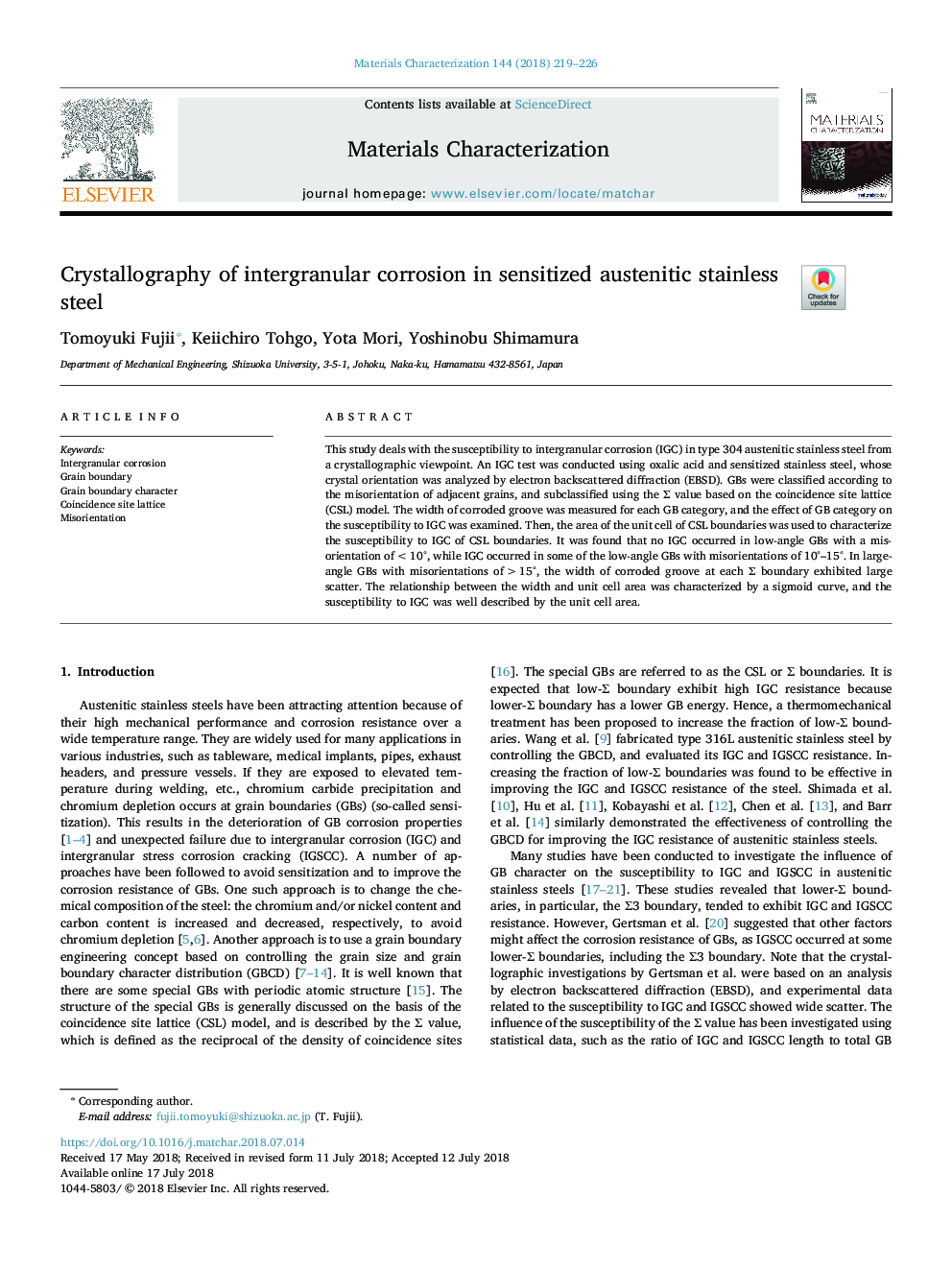| Article ID | Journal | Published Year | Pages | File Type |
|---|---|---|---|---|
| 7968978 | Materials Characterization | 2018 | 8 Pages |
Abstract
This study deals with the susceptibility to intergranular corrosion (IGC) in type 304 austenitic stainless steel from a crystallographic viewpoint. An IGC test was conducted using oxalic acid and sensitized stainless steel, whose crystal orientation was analyzed by electron backscattered diffraction (EBSD). GBs were classified according to the misorientation of adjacent grains, and subclassified using the Σ value based on the coincidence site lattice (CSL) model. The width of corroded groove was measured for each GB category, and the effect of GB category on the susceptibility to IGC was examined. Then, the area of the unit cell of CSL boundaries was used to characterize the susceptibility to IGC of CSL boundaries. It was found that no IGC occurred in low-angle GBs with a misorientation of <10°, while IGC occurred in some of the low-angle GBs with misorientations of 10°-15°. In large-angle GBs with misorientations of >15°, the width of corroded groove at each Σ boundary exhibited large scatter. The relationship between the width and unit cell area was characterized by a sigmoid curve, and the susceptibility to IGC was well described by the unit cell area.
Keywords
Related Topics
Physical Sciences and Engineering
Materials Science
Materials Science (General)
Authors
Tomoyuki Fujii, Keiichiro Tohgo, Yota Mori, Yoshinobu Shimamura,
